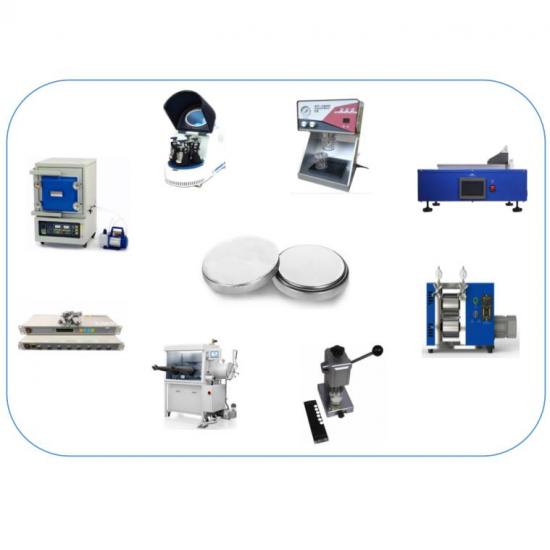A
Coin Cell pilot Machine refers to a small-scale production facility designed for the research, development, and initial production of coin cell batteries. It serves as a testing ground for new battery designs, materials, and manufacturing processes before scaling up to full-scale production.
The equipment and components typically found in a coin cell pilot line include:
Electrode Preparation: This involves coating the electrode materials onto a current collector foil. Equipment such as electrode coating machines, electrode slitting machines, and electrode drying ovens are used in this process.
Coin cell crimper: A device that crimps the coin cell components together to form a sealed cell.
vacuum degassing mixer: A machine used to mix the electrode slurry with solvent and additives.
Film Coating Machine: A device used to evenly spread the electrode slurry onto the current collector.
Coin Cell Disc Cutter: A device that cuts the electrode into a specific shape and size.
Coin cell tester: A device used to test the performance and characteristics of the coin cell.
Vacuum glove box: A sealed chamber filled with inert gas to prevent the electrode materials from oxidation.
Vacuum oven: A device used to dry the electrode and assemble the coin cell.
Precision balance: A scale used to accurately measure the weight of the electrode materials.
Cell Assembly: The assembly of coin cells involves stacking the prepared electrodes, placing separators, adding electrolytes, and sealing the cell. Equipment like coin cell assembly machines, electrolyte filling systems, and coin cell sealing machines are used for this purpose.
Formation and Testing: Coin cells need to undergo formation, a process that conditions the cells to reach their optimal performance. Formation and testing equipment, such as formation chambers, cycling testers, and impedance analyzers, are used to evaluate the electrical characteristics and performance of the coin cells.
Safety Equipment: Safety measures are critical in handling chemicals and operating the equipment. Fume hoods, fire suppression systems, ventilation systems, and personal protective equipment (PPE) are essential for worker safety.
Quality Control and Inspection: Equipment for visual inspection, dimensional measurement, and electrical testing are employed to ensure the quality and consistency of the produced coin cells. This includes equipment for voltage measurement, capacity testing, and impedance analysis.
Automation and Control Systems: Automation and control systems are integrated to monitor and control various processes, ensure consistency, and collect data for analysis and process optimization.
When setting up a coin cell pilot line, it is crucial to consider safety protocols, quality control measures, and equipment compatibility with the desired coin cell specifications. Additionally, close collaboration with battery research experts and adherence to relevant industry standards and regulations are essential for successful operation.




 Online service
Online service
